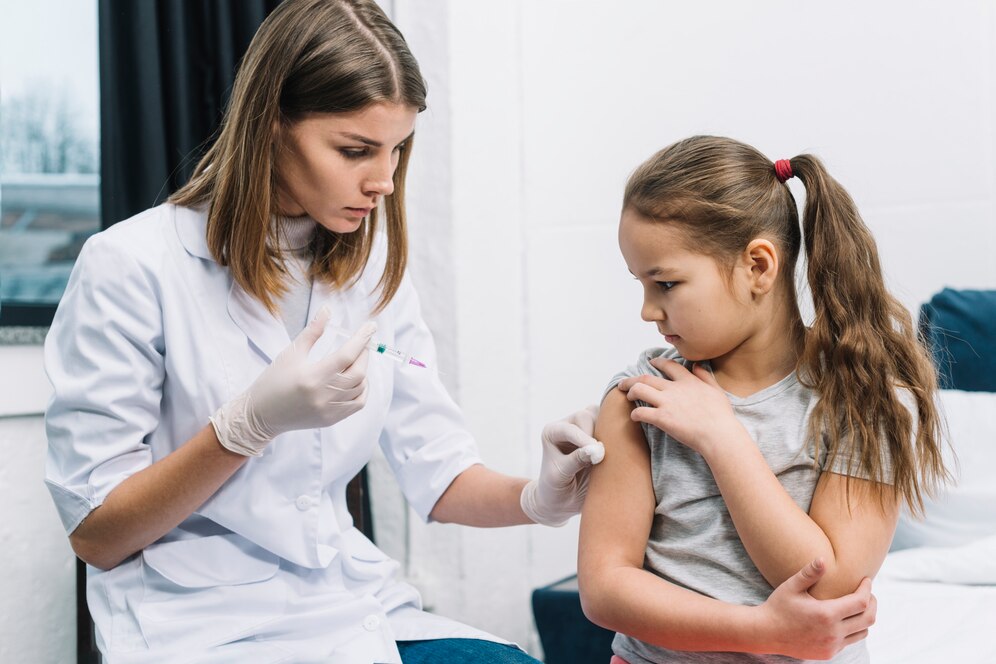Low vaccination rates, weak disease surveillance, and pandemic-induced delayed response plans are turning measles into “an imminent threat in every region of the world,” according to new data from the World Health Organization (WHO) and U.S. Centers for Disease Control and Prevention (CDC). The worst part? Measles is almost completely preventable with vaccination.
More than 40 million children missed a measles vaccine dose in 2021 – a record high – including 25 million children who missed the first dose and 14.7 million children who missed the second dose.
With “large and disruptive outbreaks” in 22 countries in 2021, there were 9 million measles cases and 128,000 deaths from measles the same year, up from 7.5 million cases and 60,700 deaths in 2020.
And it seems the situation will continue to be as bleak considering “the persistent large outbreaks in 2022.” According to the CDC, in the U.S. alone, “a total of 55 measles cases were reported by five jurisdictions” as of November 24, 2022, compared to just “13 individual cases of measles confirmed in 8 jurisdictions” in 2020.

Routine immunization rates have declined
Declines in vaccine coverage since 2016 led to outbreaks and reestablished transmission in “10 countries that had previously eliminated measles,” according to the WHO’s announcement.
As WHO Director-General Dr. Tedros Adhanom Ghebreyesus noted, “the paradox of the pandemic is that while vaccines against COVID-19 were developed in record time and deployed in the largest vaccination campaign in history, routine immunization programs were badly disrupted, and millions of kids missed out on life-saving vaccinations against deadly diseases like measles.”
And, as we previously reported, measles shots aren’t the only routine or childhood vaccinations that have been missed or delayed during the COVID-19 pandemic. Due to “the largest sustained decline in childhood vaccinations in approximately 30 years,” millions of kids worldwide missed doses of DTP3 (diphtheria, tetanus, pertussis), HPV, and other routine vaccines in 2021.
“Getting immunization programs back on track is absolutely critical. Behind every statistic in this report is a child at risk of preventable disease,” Dr. Ghebreyesus added.
How we can increase routine vaccination
At least 95% of a population needs to be immunized with two doses of measles-containing vaccine to protect against epidemics “and achieve and maintain measles elimination,” the WHO and CDC estimate. However, “the world is well under that,” they warn.
The CDC recommends children get two doses of MMR (measles, mumps, and rubella) vaccine, “starting with the first dose at 12 to 15 months of age, and the second dose at 4 through 6 years of age.”
Although coverage varies by country, only 81% of children receive their first measles-containing vaccine dose, and only 71% of children receive their second dose, which is “the lowest global coverage rate of the first dose of measles vaccination since 2008.”
Routine vaccines save 10.5 million lives in the U.S. each year—but we need to get routine vaccination and childhood vaccination back on track.
The WHO emphasized in its December 2021 report, cited by Bio.News, that unless major catch-up efforts are put in place, “the decline in vaccination coverage seen in 2020 raises serious questions about the achievability” of the Immunization Agenda 2030, which envisages that “an estimated 51 million future deaths in total will be averted by vaccination between 2021 and 2030 if coverage targets are met.”




